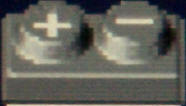 |
Converting DC to AC
The Prius battery supplies voltage at DC. To get AC for your home, an inverter is needed. When I first had the notion of using the Prius, I simply assumed that it would be necessary to design and build an appropriate inverter. The requirements, I felt, were somewhat unusual, and the inverters with which I was familiar wouldn't fill them. I've had a bit of an education since then.
The inverters with which I was familiar were routinely available with lower input voltages:
- 12VDC to 115VAC inverters are readily available that plug into auto accessory connectors or run on marine batteries. But they have limited power capabilities, a few hundred watts to perhaps a KW. Not nearly enough.
- 24VDC to 115VAC inverters are also readily available for military and aircraft use.
- 48VDC to 115/230VAC inverters are used in telephone company plants, which have a long history of using batteries for normal operation. (This is why the telephone usually works during power failures.) These inverters are capable of substantial power.
The Prius has a nominal 200V battery, and a typical terminal voltage of between 240V and 210V depending on state of charge. This is "non-negotiable" - I don't plan to redesign the Prius! But an internet search turned up another resource, the solar/wind power industry. For many excellent reasons including Ohm's Law, converting higher voltages tends to be more efficient than converting lower ones. When you put solar cells on your roof, you can connect them in series to get high voltage and low current, or in parallel, to get low voltage and high current. Since efficiency in solar conversion is so critical, manufacturers have been making inverters for solar cells that run on high voltage. Eureka! I'll use one of them: easy to obtain, reasonably priced, maybe I can even get a subsidy.
As I researched these, I got progressively more excited. Not only did they solve the DC to AC problem, they had an extra added plus: They would connect directly to the electric grid. My vision of a UPS for the house and a solution for the nation's power problems was fulfilled. It was only when I got a copy of the manual for the Sharp inverter (JH-3500U) that looked almost perfect that I discovered a fatal flaw in this type of product. Yes, it would convert DC from the Prius battery to AC for the house. Yes, it would supply the grid. And it had a number of safety and isolation features that would make the project easier to reify. But it would only work when the power company was supplying power! It would shut down, if there was no AC coming in. There are good reasons for this - see the next section. But was I ever unhappy.\
After this letdown, further research uncovered a number of companies that claimed to make an inverter that would be satisfactory, at least on a trial basis. Unfortunately they seem to be more available on spec sheets than in metal and silicon. I've been corresponding (or attempting to correspond) with a number of them, but have thus far seen no hardware. Designing this type of device is something of a specialty, and finding one to purchase is preferable to trying to build one's own. The search continues.
Is the search complete? See this UPDATE for 14 June 2005
Updated 16 June 2005